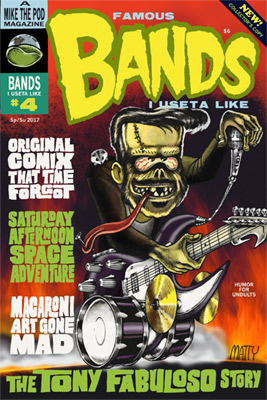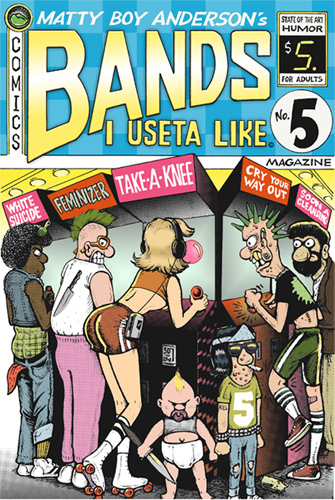Not many arcade players noticed, but in December of 1984, the sound of video games changed for the better, forever.
I certainly noticed. I pumped quarter after quarter into that Marble Madness machine, not just because I enjoyed the (admittedly very challenging) game, but because I had to hear that music, one more time.
https://youtu.be/feooGgNcKDY
The intro music played during the attract mode, luring me and pulling me across the dirty floor of the dark arcade, until I was pulling coins out of my pockets yet again. It is beautiful.
Remember, in 1984, arcades and game machines were noise polluters, unless the proprietors turned down the volume; the WAKKA-WAKKA-WAKKA of Pac-Man, the GONGGGG of Gauntlet and Crystal Castles. The BLIP-BLIP-BLIP of Donkey Kong and Mr. Do. Sometimes, the digitized “Peter Gunn” theme of Spy Hunter would rise above the cacophony, but mostly it was the aural chaos of fifty games honking at once for attention and shiny quarters.
Out of this arose the incredible WHOOOOSH of Marble Madness, deftly phasing into that perfect minimalist ostinato, practically begging me to start a game. I was hypnotized. It stuck with me more so than The Who’s “Eminence Front”. I hit the imaginary “record” button inside my brain, and did my damnedest to memorize it.
Then came Level 2.
https://youtu.be/ScKI8PM3k_g
Simply put, that is the greatest music I have ever heard in a video game. It is one of the earliest pieces I became totally, irrevocably obsessed with, from that point on.
With volume cranked, thumping out of a plywood arcade cabinet (with track-ball), it sounded like the speeding arrival of a demigod. My knees weakened. What hairs I had on my limbs stood at full mast, and legions of goosebumps marched across my forearms. I played the level until the timer ran out, not even trying to score points, just squeezing every last second out of that music. Even today, thirty-four years later, I can listen to it repeatedly, until force majeure finally intervenes.
Listen to the simple, repeating main melody, and how it intermingles with the rising bass line. The only game music I’d heard that came close was Vanguard, and as it turned out, that was ripped from the Hawkmen’s theme in 1980’s Flash Gordon.
Marble Madness was a new and different animal, even aside from the track-ball.
Marble Madness was Atari’s first game to use an FM sound chip produced by Yamaha, which is similar to a Yamaha DX7 synthesizer and creates the music in real time so that it is in synchronization with the game’s on-screen action. The game’s music was composed by Brad Fuller and Hal Canon who spent a few months becoming familiar with the capabilities of the sound chip. [Wikipedia]
It showed. And it sure as hell paid off.
Brad Fuller was something of a godsend for Atari:
Brad Allen Fuller (November 5, 1953 – January 2, 2016) was an American video game composer known for his work for Atari. Fuller composed the soundtracks for Marble Madness, released by Atari Games in 1984, Blasteroids, released in 1987, and Tengen Tetris, which was originally released by Atari in 1988. He also served as the Director of Audio of Atari, in which he oversaw all of the company’s soundtracks and music for its video games. Fuller was promoted to Director of Engineering in 1993. He remained at Atari until his departure in 1996.
Fuller was born in Indianapolis, Indiana. He studied jazz at both the Berklee College of Music in Massachusetts and Indiana University Bloomington.
Fuller had originally began his career at Atari as an audio engineer in 1982. He engineered the music for some of Atari’s best known titles, including Donkey Kong, Robotron: 2084, and Superman III, which was never released. [Wikipedia]
Mark Cerny was Marble Madness’ lead designer, and Bob Flanagan was the software engineer. Combined with Fuller and Canon, the resulting video game felt and looked more “art” than “Atari”. The levels after #2 have interesting tunes, but they’re much more tense and avant-garde than the soothing pieces that come before. The nervousness I felt at the start of Level 3 is something I never recovered from while playing. Note the marked difference in ambiance:
https://youtu.be/5YabExVCt1Q
Harder enemies would appear to threaten your precious marble, like green pools of caustic acid, blowers that push you off ledges, and of course, the “steelie”- a metallic orb that would bop you into oblivion with little effort. The game became tougher exponentially. It wasn’t until I bought the Nintendo version in the 90’s that I saw the fourth and fifth levels. Here’s a playthrough if you’re curious:
https://youtu.be/jazxSQz0yL4
Speaking of that Nintendo port- it doesn’t sound like they tried very hard to match the greatness of the original soundtrack. I was actually disappointed to the point of anger when I heard what had been done with my precious Level 2 (50% of the reason I bought the cartridge, Level 1 being the other 50). Look, we all know how great the music in the old Zelda games was, right? You’re telling me Nintendo couldn’t do better than this? I didn’t want this playing in my head, no sir.
That’s nearly as terrible a port as the Three Deadliest Sins of the Atari 2600: Raiders of the Lost Ark, Pac-Man and E.T.. In case you weren’t born, don’t remember, or had better things to focus on, Raiders for the 2600 reduced the classic “Indiana Jones theme” to 15 unharmonized tones, E.T. received a similar musical gutting, and the immortal intro music from Namco’s Pac-Man became “DAH DEE DAH DUM”. This was the fault of time and budgetary constraints, not the competency of the programmers or the limitations of the hardware.
The Sega Genesis, on the other hand, did it right. Playing the game with their six-button controller instead of a track-ball was another story.
(Plus, the Genesis had a 16-bit processor, while the NES only had 8-bit, which helped a great deal.)
Atari could’ve treated the music score for Marble Madness as an afterthought. Instead they instigated a quantum leap in electronic sound. Over the years, there have been a precious few video games with music that happily pops into my head at the mere mention of their titles.
Marble Madness was and is #1.












You must be logged in to post a comment.